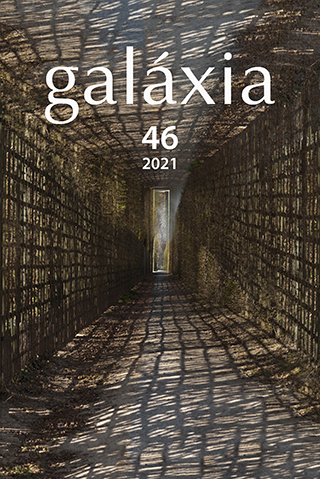All that is solid melts into the future
Imaginary perceptions of the body in futuristic movies
Keywords:
science fiction, human body, imaginary of the future, Aby Warburg, cinemaAbstract
This paper investigates the projections of the social imaginary on the future of the human body in the cinematographic image of science fiction. We seek, therefore, to understand how images of the future of mankind play out in the movies. The question that guided us along the way was: based on the images we create today in science fiction films about tomorrow, which desires, fears, hopes, anxieties and expectations have we pointed out in our collective construction of the imaginary of the future? We started with the social perspective of the future that advertising in the 19th century pointed to for the year 2000. A positive view of progress from the technology in our lives. Then, through an analysis of a constellation of frames from contemporary futuristic films, inspired by the studies of the researcher Aby Warburg, we propose a perspective of reading and understanding of a social memory and its respective affects on the contemporary projections of the future of the body human. At this moment, we can observe the imagens reflect the pessimism in regard to the contemporary relationship between technologies and the body.
References
BATARCE, Renato. 964 PINOCCHIO (Shozin Fukui – 1991). Película Raivosa. 2011. Disponível em: <https://pelicularaivosa.wordpress.com/2011/03/14/964-pinocchio-shozin-fukui-%E2%80%93-1991/>. Acesso em outubro de 2019.
BERARDI, Franco. Depois do Futuro. São Paulo: Ubu editora, 2019.
DUARTE, Eduardo. A Fábula Restante dos Últimos Homens. Recife: Ed. Universitária. 2004.
DUARTE, Eduardo; SEVERIEN, Pedro. A insustentável leveza do deixar de ser. In: ARAUJO, Denize; BARROS, Ana Tais; CONTRERA, Malena; ROCHA, Rose de Melo (Org.). IMAG (EM) INÁRIO. São Paulo: Imaginalis. p. 2018.
GERGEN, Kenneth J. Technology and the self: From the essential to the sublime. In: GRODIN, Debra; THOMAS, Lindlof R. (Ed.). Constructing the self in a mediated world. California: Sage Publications, 1996.
JOHNSON, Christopher D. Memory, metaphor, and Aby Warburg's Atlas of images. Ithaca: Cornell University Press, 2012.
LEAKEY,Richard. A Evolução da Humanidade. São Paulo: Melhoramentos, 1981.
LE BRETON, David. Adeus ao corpo: Antropologia e sociedade. Campinas: Papirus, 2017.
MACIEL, Jane Cleide de Souza. Atlas mnemosyne e saber visual. In: Revista Ícone. Recife: PPGCOM/UFPE, 2018.
MICHAUD, Philippe-Alain. Aby Warburg e a imagem em movimento. Rio de Janeiro: Contraponto. 2013.
MILLS, Ted. How French Artists in 1899 Envisioned Life in the Year 2000: Drawing the Future. OPEN CULTURE, 2015. Disponível em: <http://www.openculture.com/2015/09/how-french-artists-in-1899-envisioned-life-in-the-year-2000.html#comments>. Acesso em: 15 de setembro de 2018.
MINOIS, George. História do Futuro – dos profetas à prospectiva. São Paulo: UNESP. 2015
MORIN, Edgar. O cinema ou o homem imaginário: ensaio de antropologia sociológica. São Paulo: É Realizações, 2014.
MOORE, Sam. Tetsuo: The Iron Man and the dark side of transhumanism. The Little White Lies. Disponível em: <https://lwlies.com/articles/tetsuo-the-iron-man-and-the-dark-side-of-transhumanism/>. Acesso em: 10 de outubro de 2019.
SIBILIA, Paula. O Homem pós Orgânico – a alquimia dos corpos e das almas à luz das tecnologias digitais. Rio de Janeiro: Contraponto. 2014.
THOLOZANY, Pauline de. The Expositions Universelles in Nineteenth Century Paris. Brown University. Disponível em: https://library.brown.edu/cds/paris/worldfairs.html#de1900. Acesso em 10 de outubro de 2018.
Downloads
Published
How to Cite
Issue
Section
License
Copyright (c) 2021 Eduardo Duarte, Gustavo Ramos

This work is licensed under a Creative Commons Attribution 4.0 International License.
I cede the copyrights to publication of my article to Galaxia journal and will consult the journal’s scientific editor should I decide to republish it later in a book.



 Este obra está licenciada com uma Licença
Este obra está licenciada com uma Licença 